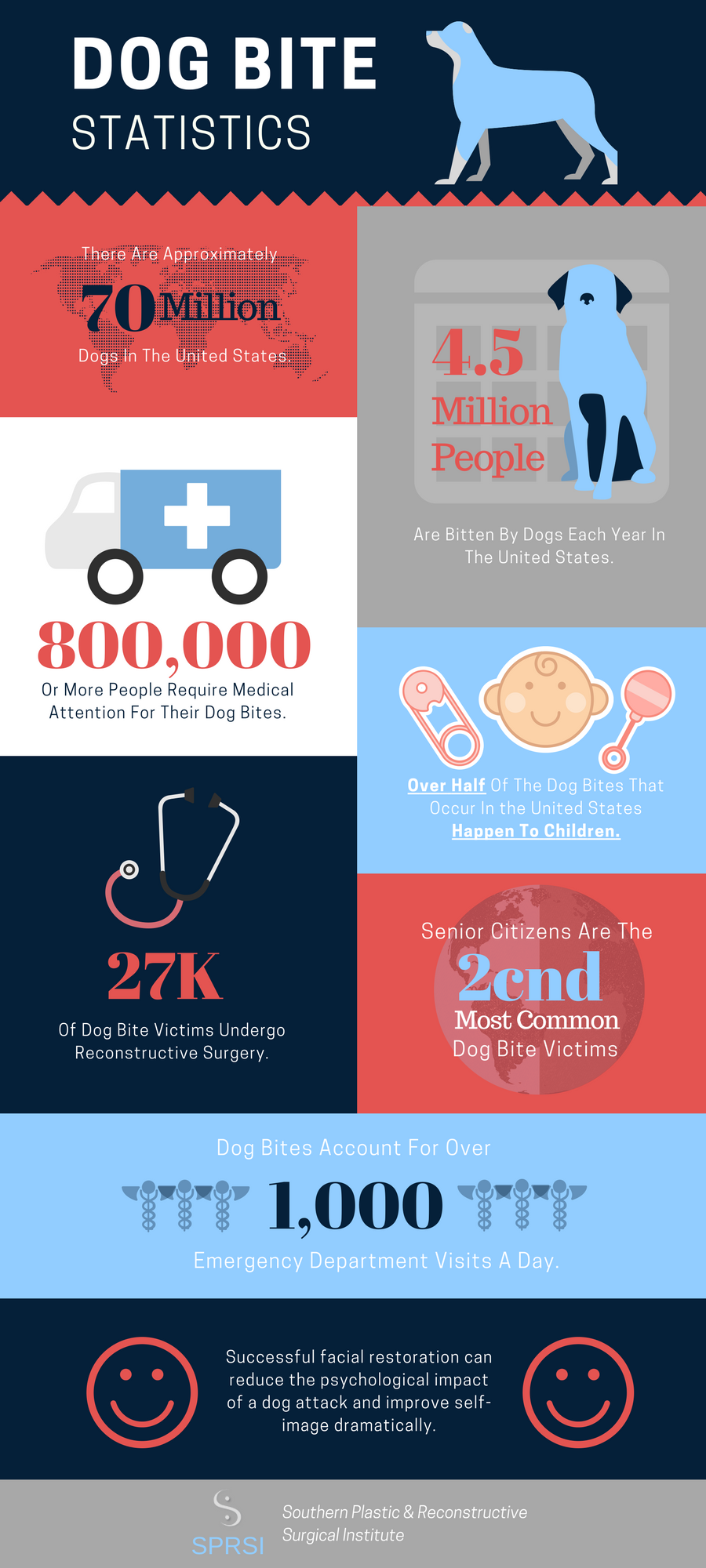Treating Dog Bites in Children
Dogs may be known as man’s best friend, but millions of Americans are bitten every year. Thousands of incidents result in a trip to the emergency room, hospitalization and worse.
Although there are steps you can take to avoid dog bites in kids — including never leaving a child alone with a dog, always asking a dog’s owner if it’s safe to pet or approach a strange dog, and avoiding close contact with a dog that is sleeping or eating — accidents sometimes happen. Unfortunately, kids are the most frequent dog attack victims. Their injuries are sometimes so severe that plastic surgery is necessary to restore normal appearance and function.
Children between the ages of 5 and 10 are most likely to be bitten by a dog, and kids under the age of 4 are most likely to suffer head and neck dog bite injuries. If a dog bit your child, and you’re not sure what to do, immediate dog bite treatment is essential — even if you’re not sure how serious the injury is. Depending on its severity, a trip to the plastic surgeon may be necessary to prevent scarring and infection. Dog bite reconstructive surgery can help restore a child’s confidence so that they look and feel their best.
Dog Bite Statistics

What to Do Immediately After a Dog Bite
If your child has been bitten by a dog:
- Apply gentle pressure with a clean cloth to the injured area to control bleeding. If the bleeding doesn’t stop after 10 minutes, or if the wound looks deep or the dog bit your child’s face, call your pediatrician.
- If the bleeding stops, carefully clean the injured area with a saline solution or soap and water. Apply an antibiotic ointment such as Neosporin immediately and cover the wound with a bandage.
- If you don’t know the dog, report the incident to your local health department. The health department should be able to find out if the dog is vaccinated against rabies, a disease that is transmissible to humans. Rabies, when left untreated, is fatal.
- Contact your pediatrician to find out if a tetanus shot is necessary.
- Watch for signs of infection. Dog saliva contains numerous contaminants, which is why prompt cleansing of the wound and possibly medical attention may be necessary. Infection signs include redness or swelling at the wound site, pus discharge or warmth.
When a Dog Attack Ends in Plastic Surgery
Stitches reduce the risk of scarring. Unless the injury occurred on or near the face, however, it is unusual for a physician to use stitches to close a dog bite wound because of the risk of infection. In some cases, a wound may be so severe or noticeable that plastic surgery is necessary.
With the right treatment, dog bite reconstructive surgery can eliminate or reduce the appearance of dog bite scars. In the most serious cases, multiple surgeries are necessary. If you are unsure whether or not your child requires medical attention, make an appointment anyway, because early evaluation followed by prompt treatment often results in improved outcomes.
 SPRSI Treats Dog Bites in Babies and Children
SPRSI Treats Dog Bites in Babies and Children
Dr. Nathan Brought and his team at SPRSI have experience treating dog bites in babies, children, adolescents and adults. We understand that dog bite victims and their family members often feel traumatized or frightened after an attack. Dr. Brought can reduce feelings of discomfort during treatment and help your child relax.
Schedule an Appointment
Contact SPRSI for a consultation to see if getting reconstructive surgery for a dog bite is the right choice for you or your loved one.

